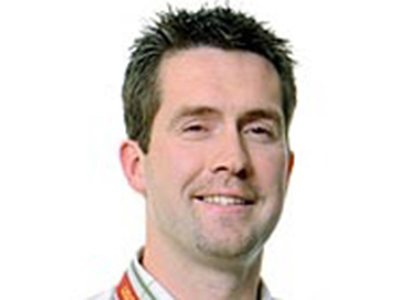
Researchers at the Keck School of Medicine of the University of Southern California (USC) have shown that Cinacalcet, a drug now used for treating disorders of the parathyroid gland, can help transplanted, blood-forming stems cells to lodge in their new environment. The findings, recently published in Blood, hold promise for effective future use of stem cells to treat blood disorders and cancers.
Gregor Adams, assistant professor of cell and neurobiology at the Keck School, was the principal investigator for the paper, “Pharmacologic modulation of the calcium-sensing receptor enhances hematopoietic stem cell lodgment in the adult bone marrow.” First author of the paper was Ben Lam, a graduate student in Adams’ laboratory.
The study is based on previous research conducted by Adams, which concentrates on understanding the stem cell niche, the environment that controls stem-cell physiology. One area of the lab’s investigations focuses on the mechanism by which stem cells recognize and lodge in bone marrow.
An earlier study found that the amount of bone-mineral calcium in the stem-cell niche may determine whether stem cells lodge in the marrow; transplanted hematopoietic, or blood-forming, stem cells (HSCs) in mice that were deficient in the calcium-sensing receptor (CaR) had trouble recognizing and lodging in the bone-marrow niche.
Building on that study, Adams and his lab recently used Cinacalcet to activate the CaR of laboratory mice receiving HSCs of healthy mice, enhancing the cells’ ability to find and lodge in the bone marrow niche, thereby stabilizing the transplantation.
“We can now better understand the mechanisms by which the hematopoietic stem cells interact with the niche, and how they’re retained in the niche for the life of the individual,” said Adams.
Before going to a human trial, Adams said, the next step will be to treat human cells with Cinacalcet and inject these into immunodeficient mice. Because the researchers are using an already clinically approved drug, the treatment has the potential of moving along more quickly to human trials and clinical use than treatments with newly developed drugs.
One possible future application of the study is in using umbilical-cord blood to treat adult blood disorders. Currently, Adams said, umbilical-cord blood contains too few stem cells to be effective for such use. “We want to increase the HSCs’ efficacy because ultimately we want to be able to use transplanted umbilical-cord blood to treat a wide variety of adult disorders, including acute leukemias, aplastic anemia and genetic blood conditions.”
Another focus of Adams’ lab is studying the various components of the HSC niche, seeking cues for cellular interactions, growth factors and matrix molecules that influence the stem cells. The researchers previously found that when osteoblasts – bone-making cells – were stimulated to increase, the number of HSCs increased.
Adams’ lab is part of the new facility housed in the Eli and Edythe Broad CIRM Center for Regenerative Medicine and Stem Cell Research at USC. Founded in 2006, the Center’s laboratories generate stem-cell research discoveries and aim to apply them in therapeutic focus areas founded on outstanding clinical research programs at the Keck School. This includes the areas of ophthalmology, liver disease, diabetes, cardiovascular medicine, oncology and hematology.
